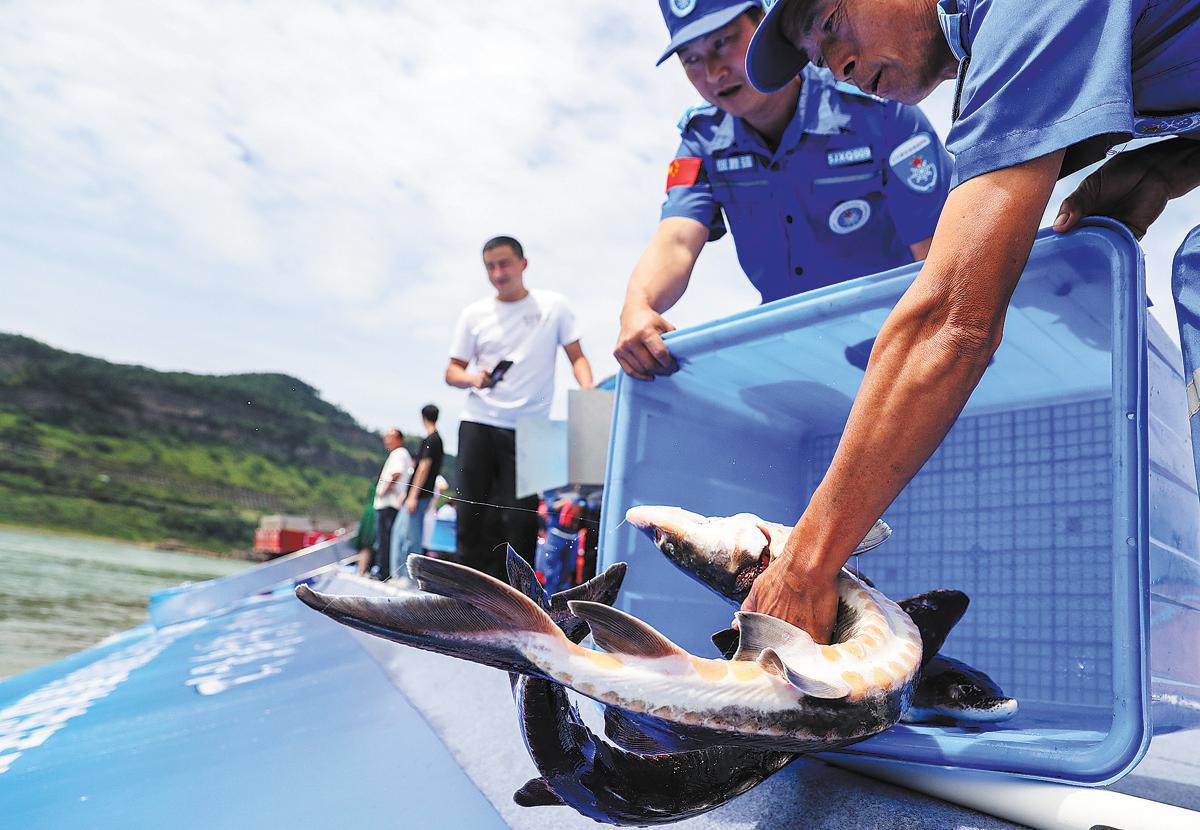Researcher calls for release of more artificially bred species


A researcher has called for the scaling up of the release of artificially bred fish of some endangered species in the Yangtze River and better shoreline restoration to further improve the aquatic ecosystem in Asia's longest watercourse.
Liu Huanzhang, a professor with the Chinese Academy of Sciences' Institute of Hydrobiology in Hubei provincial capital Wuhan, also hailed the 10-year fishing moratorium that came into effect in the Yangtze River Basin on Jan 1, 2020, as a bold initiative with no precedent globally, both in scale and duration.
The urgency of this measure is underscored by the alarming decline in the Yangtze's aquatic resources and a severe setback in its biodiversity. Past attempts at fishing bans that lasted annually for three months proved insufficient, with unsustainable fishing practices quickly reversing any progress made.
Liu stressed that the ban provides a crucial window for the Yangtze's ecosystem to recover. He also said, however, for some endangered species like Chinese sturgeon, which takes nine years for its male and 14 years for its female to reach sexual maturity, the release of artificially bred fish is necessary to help restore their population.
However, the previous scale of release has been insufficient, and the work was also adversely affected by overfishing, he said.
According to the Ministry of Agriculture and Rural Affairs, starting this year, the ministry will allocate 50 million yuan ($7 million) in funding annually to ramp up the release of artificially bred endangered species in the Yangtze.
With the money, the ministry will release 1 million adolescent fish of endangered species into the Yangtze this year, it said. By further increasing the input, it will strive to gradually increase the number to 5 million a year in 3 to 5 years.
Liu said, aside from increasing the numbers, it is also important to release older artificially bred fish. "These young fish released into the wild are easily preyed upon by predators," he noted.
He emphasized shoreline restoration as another key measure China needs to further enhance to rejuvenate the Yangtze's aquatic ecosystem.
Many of Yangtze's flood plains, once critical spawning and nursery grounds, have been severely degraded by shoreline development for flood control and navigation, he said.
Learning from experiences in Europe, he said, China can adopt strategies like meandering riverbank designs, which can help create small bays that are prone to the growth of moss and aquatic plants, creating a favorable environment for small insects, which then provides a food source for small fish.
- Beijing explores robots to support aging population
- Aid cadre decides to stay permanently in Xizang
- Inner Mongolia's two ports named national smart port models
- Ministry lodges stern representations with US over $11b arms sales plan to Taiwan
- Unlocking life in Gansu: an Egyptian professor's journey with the Five-Star Card
- NE China's Heilongjiang issues highest-level blizzard warning




































